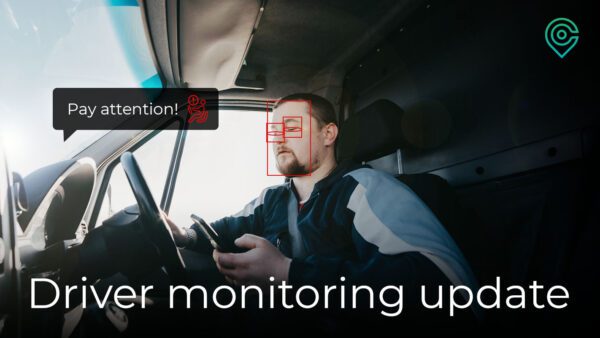Everybody works in a ‘data-driven’ business these days. But how many of us really do? Whilst we collect more data than we ever have before, are we really learning anything from it? Do we understand it, and are we using it to make meaningful changes and improvements to our business?
These are questions that should be asked by almost any executive, in any industry. But they are particularly relevant to fleet managers. With the advent of telematics, followed by dashcams and more comprehensive 360° camera systems, the average fleet collects more data than ever before. In fact, far more data than one individual, or even a team of individuals, can meaningfully analyse and act upon.
So how does that data get used? Usually in an entirely reactive way.
An accident or incident occurs, and the data (visual and telematic) relating to that incident can be retrieved and reviewed by fleet managers. I’m not for a moment suggesting that this isn’t helpful. In cases where liability is disputed, video footage of an incident is incredibly valuable. If there’s a suggestion that speed played a role in an accident, and your telematics data can prove otherwise, that’s clearly a situation where you’d rather have the data than not.
But to a great extent, that tends to be where things stop. That isn’t really surprising. As we noted above, it simply isn’t realistic to expect fleet management and operations team to analyse the vast amounts of data supplied by modern camera and telematics systems. And without really looking at data – all the data – we aren’t going to discover ways in which our fleet operations, and business, can be made safer and more efficient over time.
Enter Artificial Intelligence
You can’t move for talk of AI these days. And while some of that talk is fanciful, there’s no doubt that artificial intelligence can play a major role in helping find significance and insight from large sets of data. And that, fortunately, is precisely the challenge we have here.
AI, as part of a safety and operations platform dedicated to improving fleet operations across the board, can automatically process and interpret data – so that you don’t have to. By doing so, it transforms what are otherwise ‘dumb’ camera and telematics systems into proactive, integrated systems for driving efficiency and safety.
To give just three examples:
- AI is able to identify and isolate repeated incidents of a certain type, and recommend action in response. For example, a specific driver may consistently be breaking speed limits or leaving the engine idling when stationary. An AI-powered solution can step in to deliver personalised driver training (without any input from fleet managers) and thus improve safety and compliance standards over time.
- AI can sift through telematics data to identify where vehicle usage is inefficient and deliver recommendations for right-sizing of the fleet or improved allocation of vehicles. It can even identify when specific vehicles are candidates for the transition to electric power, and even what models should be considered as replacements.
- AI can identify when vehicles are showing signs of requiring maintenance (outside of regular schedules) and highlight when there may be issues that need addressing – and what they might be. As such, it can improve fuel efficiency and help reduce emissions and fuel costs throughout the fleet.
Indeed, there are an almost infinite number of ways in which AI can be used to direct and improve fleet operations. But it goes beyond even this.
Acting in the moment
Cameras are wonderful, but they are not the human eye. They don’t necessarily ‘understand’ what they see, which is why what they show needs to be interpreted by a driver (or fleet manager after the fact).
But that is changing. AI is able to learn over time and become aware of what it sees in a way that cameras alone cannot. That matters a huge amount from a fleet safety perspective: when a safety system is able to distinguish a pedestrian from a post-box, or a traffic cone from a cycle courier, it is in a position to warn drivers in-the-moment.
Specifically, AI enables driver warnings relating to vulnerable road users to be accurate – every time. In turn, that means drivers can trust those warnings and will respond to them when they need to. The camera becomes a trusted extra pair of eyes, warning when there is potential for accident and thus stopping those accidents happening.
When you consider the cost of accidents, particularly to organisations operating large fleets of large vehicles, it becomes apparent that AI can have a significant effect on the total cost of fleet ownership.
It enables us to learn from data, rather than drown in it. And it is at the heart of next-generation safety platforms like CameraMatics.
Drop us a line if you’d like to find out what it can do for your business.








